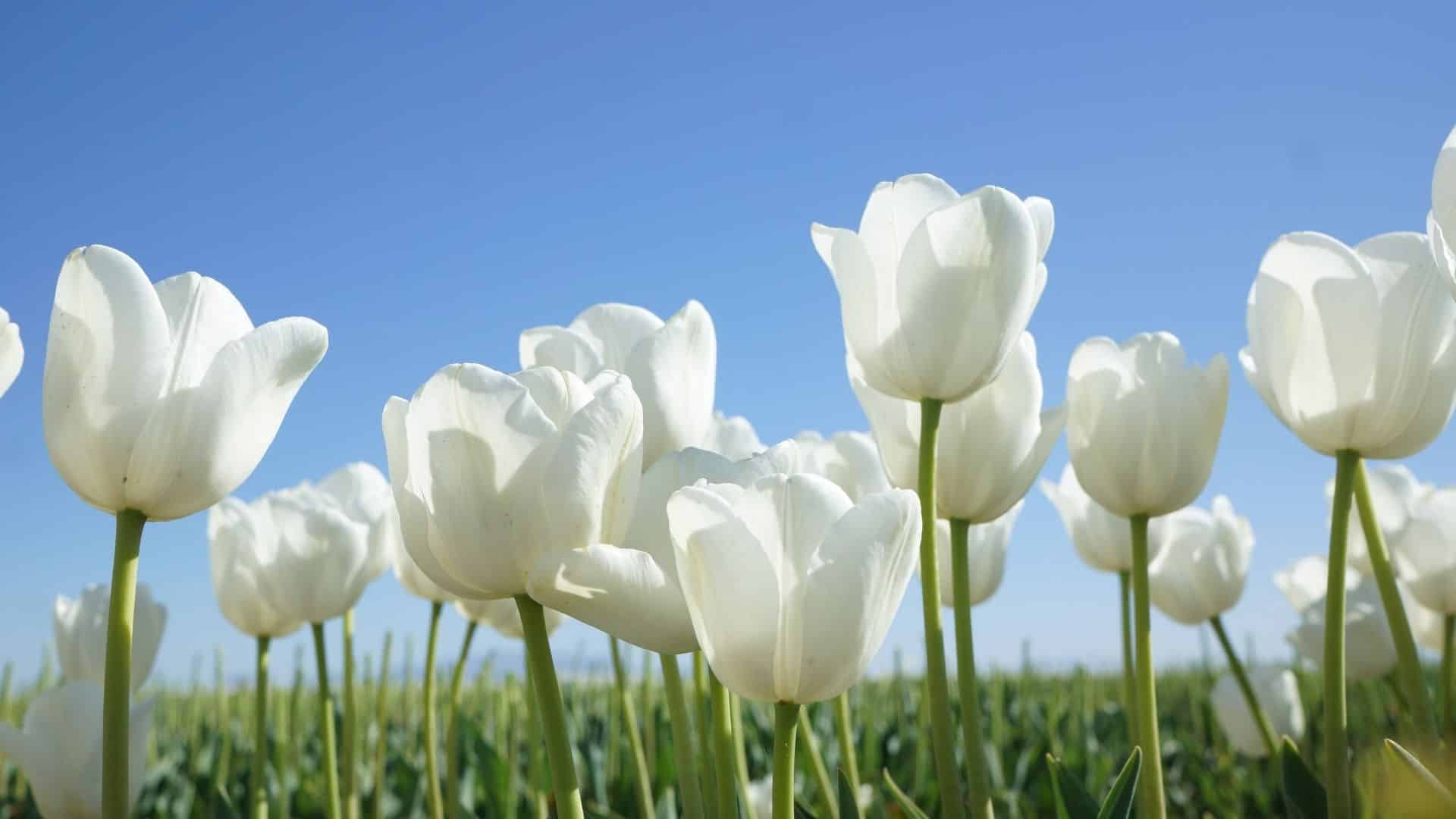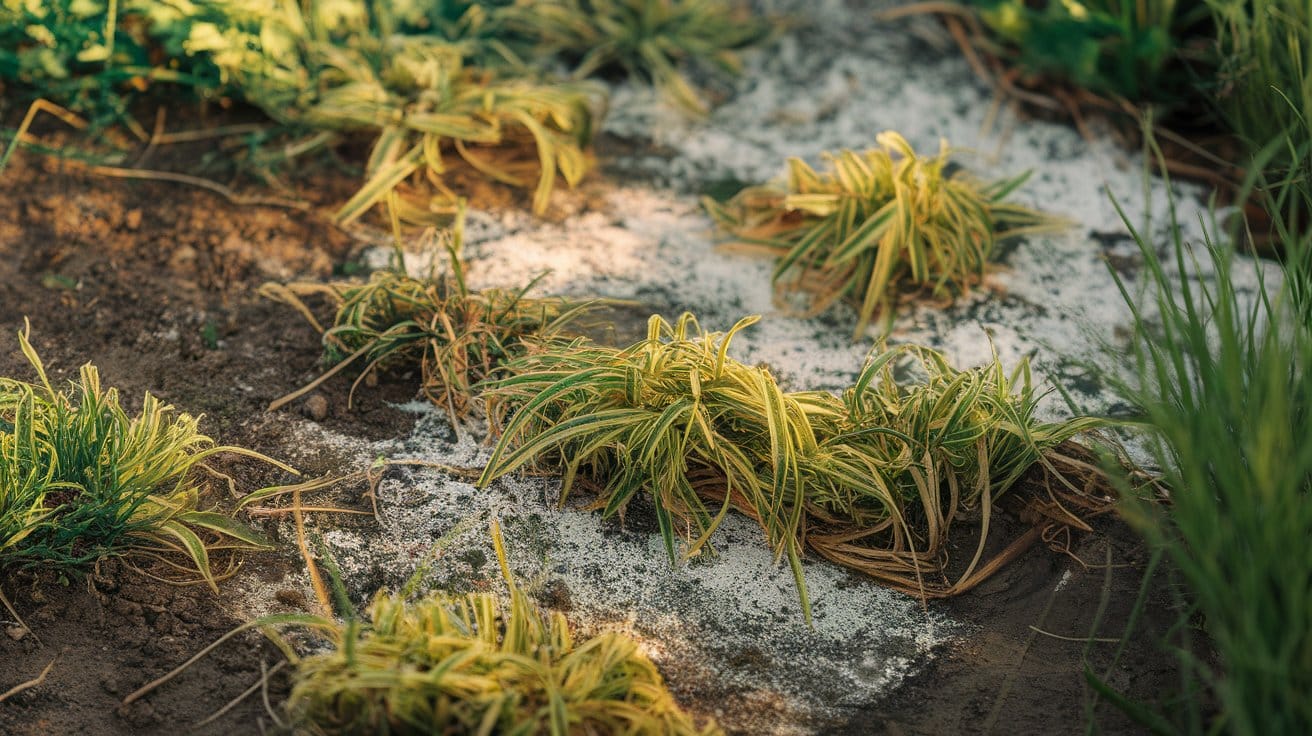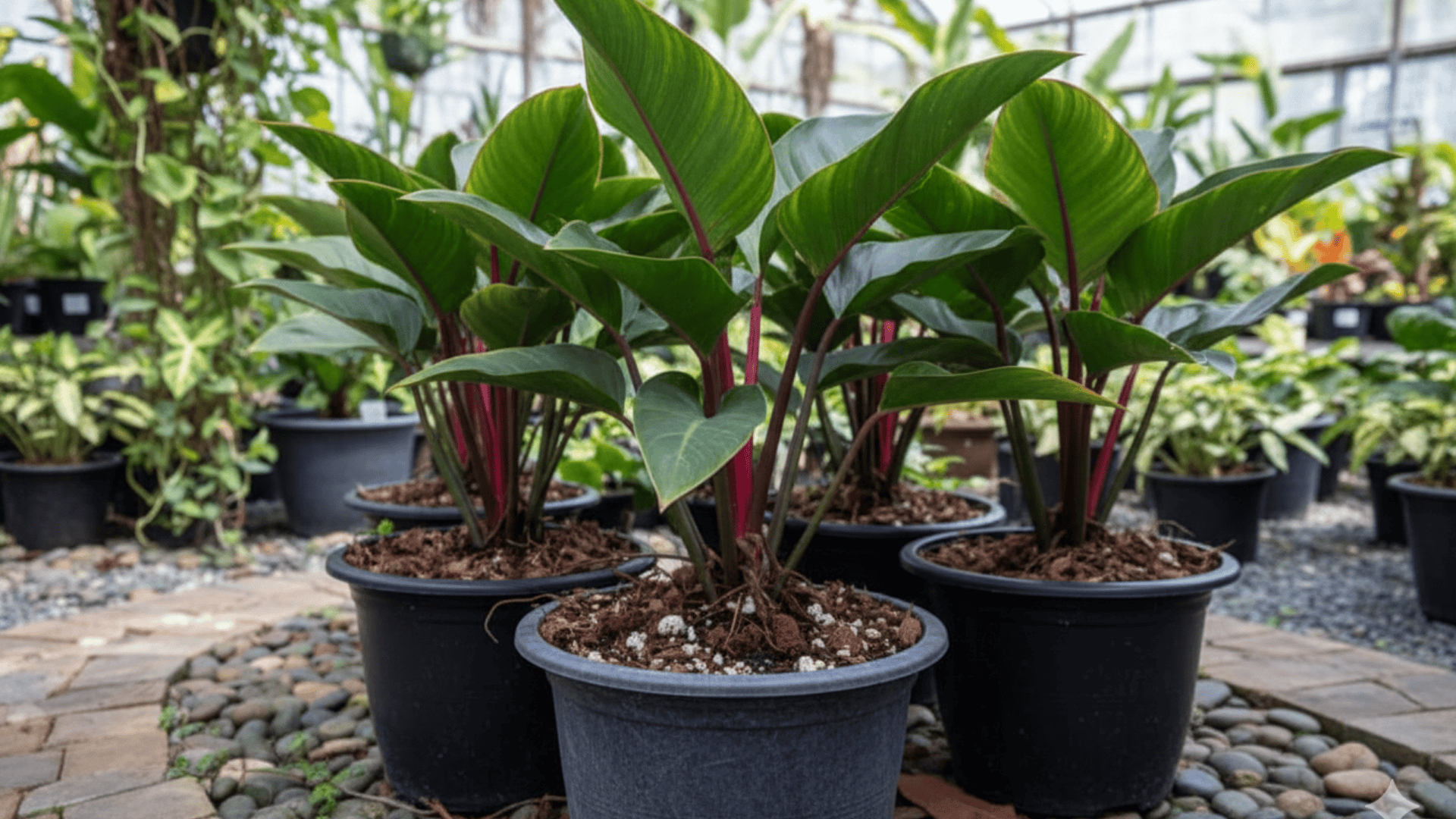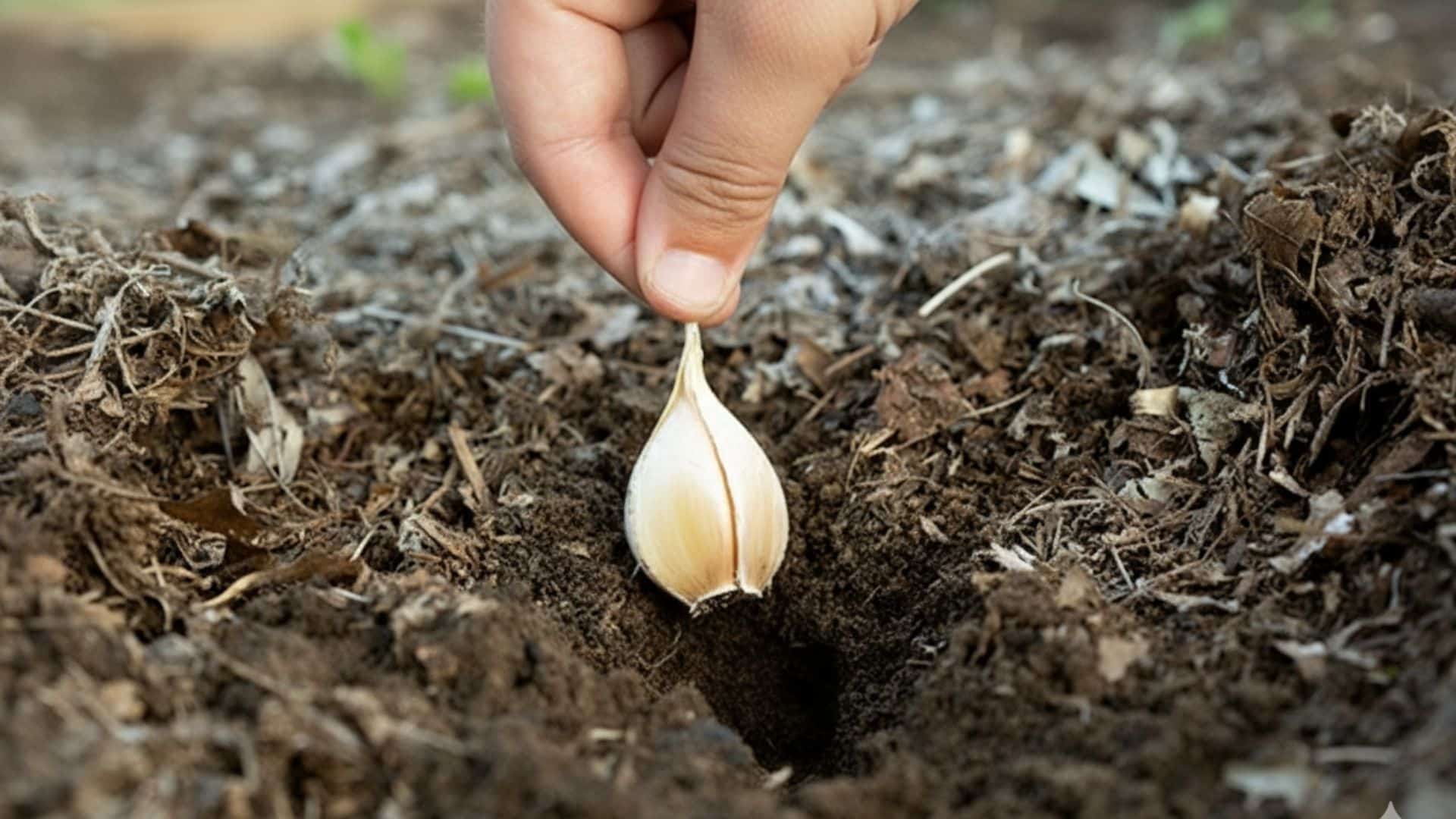Tulips have long been a favorite symbol of spring, brightening gardens with their vibrant colors and charm.
Few flowers can match the excitement of seeing those first green shoots appear after a long winter.
But behind their beauty lies a common gardening puzzle: why do some tulips bloom again while others vanish after one season?
This blog takes a closer look at what makes tulips behave in a unique way.
It shares what influences their life span, how hybrid and species tulips compare, and what steps help them come back stronger each spring.
By the end, you’ll know how to enjoy tulips for years instead of a single season.
Are Tulips Perennials?
Tulips are technically perennials by nature. In the wild, across the cool mountain slopes of Central Asia, they return every spring after resting underground through hot, dry summers.
The bulbs recharge during that period and begin to grow again as the weather cools and moisture returns.
In gardens, though, tulips don’t always repeat this cycle. Many modern varieties were bred for bright colors and large blooms rather than long-term endurance.
After their first year, the bulbs often shrink or split, leaving small offsets too weak to flower.
While tulips are technically perennials, their performance depends greatly on climate, soil, and proper care.
Why Tulips Don’t Always Return Every Year?
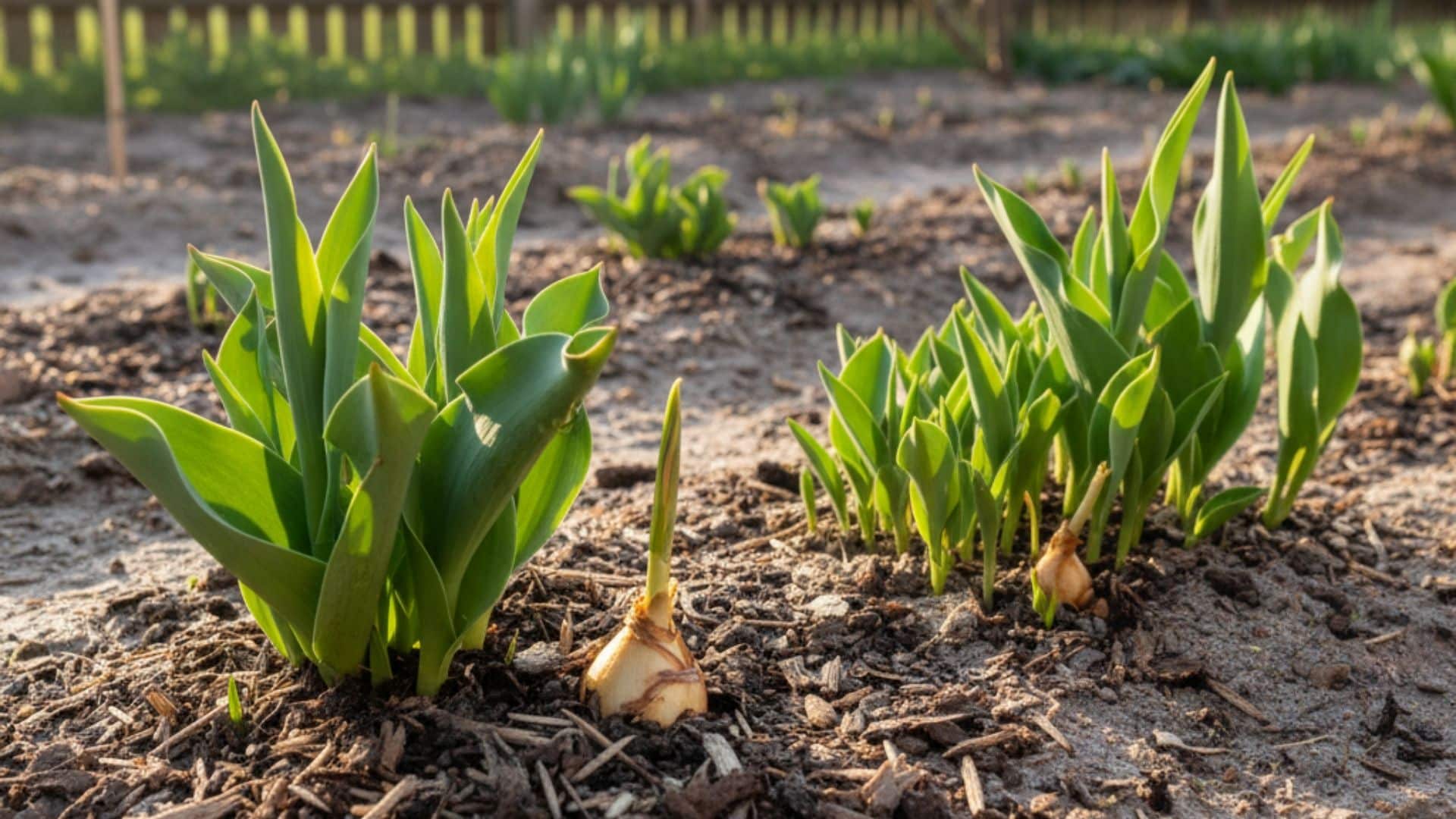
In nature, tulips follow a perfect rhythm of cold winters and dry summers.
In modern gardens, recreating that balance isn’t always easy, especially in humid or mild climates.
Here are the main reasons they may fade after a single season:
1. Climate and Temperature
Tulips need a long period of cold to form healthy flower buds. Without a proper winter chill, the bulbs may not reset and can produce weak or no blooms.
In regions with mild winters, pre-chilling bulbs before planting helps mimic natural cold conditions.
Too much warmth or summer rain can also cause rot, so bulbs should rest in dry soil during dormancy.
2. Soil Drainage
Good drainage is essential for tulip health. Constantly wet soil suffocates the roots and encourages fungal rot.
Sandy or loamy soil allows water to pass through while keeping bulbs dry and well-aerated.
Adding compost or sand to heavy soil improves drainage and helps bulbs last longer underground.
3. Overcrowding
Over time, tulip bulbs multiply and crowd together beneath the soil.
When space becomes limited, plants compete for nutrients and airflow, resulting in fewer or smaller flowers.
Lifting and dividing bulbs every few years creates room for stronger growth and better blooming results.
4. Nutrient Depletion
Tulip leaves play a crucial role in replenishing bulb energy after flowering.
Cutting them too early prevents nutrients from being stored for the next year’s bloom.
Let the leaves stay until they turn yellow and wither naturally, then remove them.
This simple step ensures the bulbs remain strong and ready for another season.
What Types of Tulips Are Likely to Be Perennial?
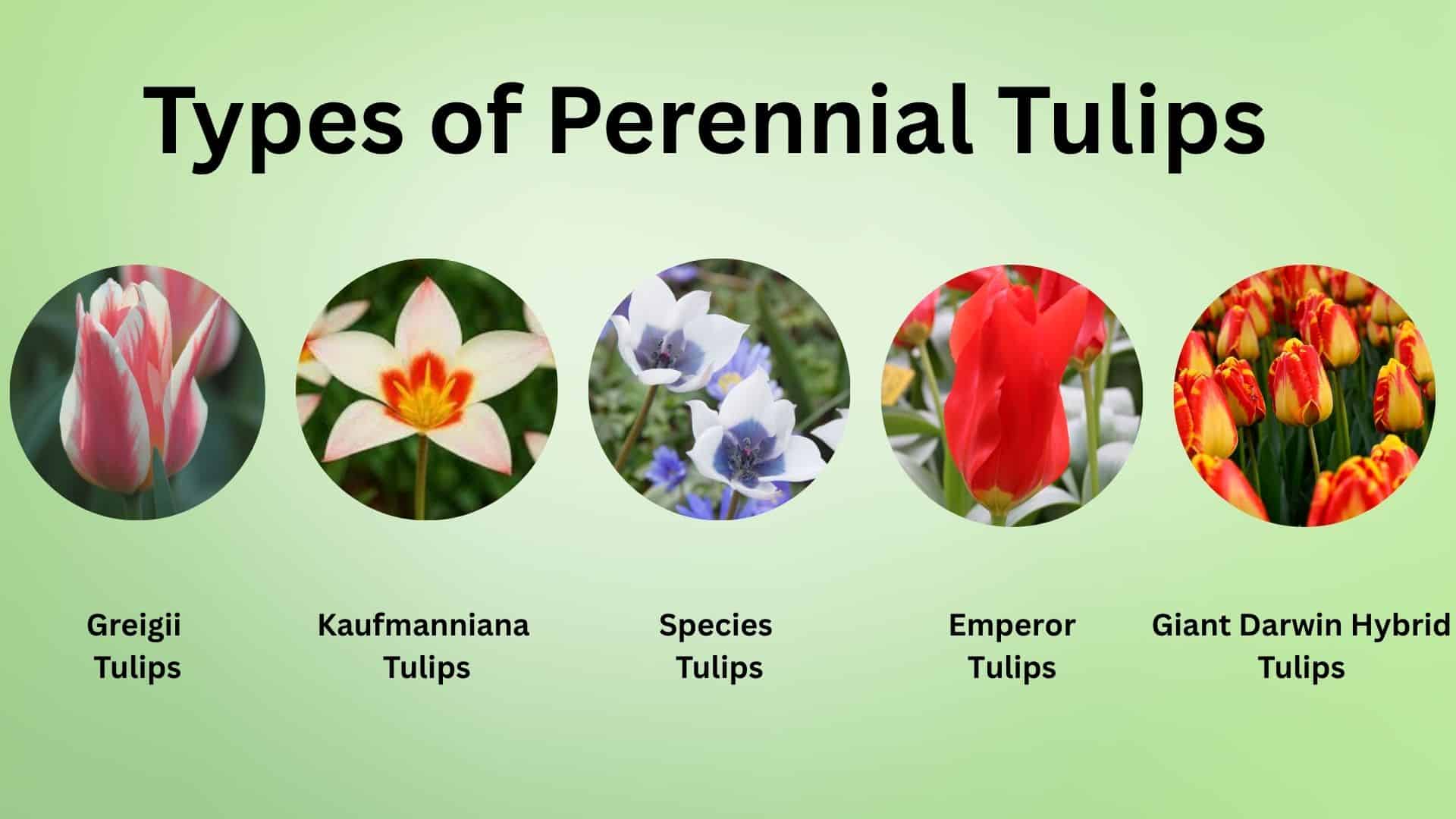
Although no tulip variety can guarantee a return every year, some are naturally stronger and more likely to perennialize when grown under the right conditions.
Here are the tulip varieties most likely to behave as perennials:
1. Greigii Tulips:
Known for their beautifully mottled leaves and bright, wide blooms. Their short height and sturdy stems make them perfect for garden borders and exposed areas.
2. Kaufmanniana Tulips:
Often called Water Lily Tulips, these open wide during the day and close again at night. Compact and early-blooming, they perform well in rock gardens or small flower beds.
3. Species Tulips:
The hardiest group of all, species tulips closely resemble their wild ancestors. They naturalize easily in well-drained soil and return reliably each spring.
4. Emperor Tulips (Fosteriana):
Recognized for their large, vivid petals and early bloom time. These strong growers remain dependable for several years with little maintenance.
5. Giant Darwin Hybrid Tulips:
Famous for tall stems and classic tulip shape, they produce bold, long-lasting flowers.
With proper care, they can return for two to three seasons before needing replacement.
Choosing a mix of these varieties adds both visual range and resilience to your garden. They offer dependable color, staggered bloom times, and the best chance of perennial success.
How to Encourage Tulips to Grow as Perennials?
Tulips can last for years if their bulbs stay healthy after blooming.
The goal is to mimic their natural rhythm: plenty of sun, good drainage, and time to rest. Small adjustments in care can make a big difference.
Try these simple habits to help tulips return every spring:
- Let foliage yellow naturally: The leaves feed the bulb once flowers fade. Wait until they dry before removing them.
- Feed bulbs after flowering: Apply a balanced, low-nitrogen fertilizer to restore nutrients for next year’s bloom.
- Plant in sunny, well-drained soil: At least six hours of sun and loose soil keep bulbs healthy.
- Lift bulbs in warm regions: After the leaves die back, dig up the bulbs and store them in a cool, dry spot until fall.
- Replant deeply: Place bulbs 6–8 inches deep and about 4 inches apart to protect from temperature swings.
- Mulch lightly for winter: Add a thin layer to guard against frost, removing it when shoots appear.
- Cut sparingly: When taking flowers indoors, leave a few leaves to continue photosynthesis.
Hybrid vs. Species Tulips
Species tulips are the original, wild ancestors of the modern hybrid tulips seen in gardens and floral shops nowadays.
They naturally occur in regions like Central Asia, the Mediterranean, and parts of the Middle East, and they’ve been growing in the wild for thousands of years.
Garden tulips come in two main types, each with different habits and needs. The table below illustrates the differences.
| Feature | Hybrid Tulips | Species Tulips |
|---|---|---|
| Origin | Created by crossing multiple varieties | Naturally occurring wild tulips |
| Bloom Size | Large and showy | Small to medium-sized |
| Color Range | Wide variety of bright shades | Natural hues like yellow, red, and pink |
| Bloom Duration | One strong bloom, then a decline | Reliable blooms every year |
| Lifespan | Short-lived | Long-lived and self-spreading |
| Care Needs | Often need lifting and replanting | It can remain in the ground for years |
| Best For | Seasonal displays | Naturalizing or low-care gardens |
Species tulips might look modest next to hybrids, but they reward patience with years of steady color.
Many gardeners plant a mix of both: hybrids for dramatic impact and species for long-term beauty.
Conclusion
Tulips remind us that some of the best things in gardening require a bit of timing and care.
Their return each spring depends on local weather, soil health, and the variety of bulbs, but every gardener can find a method that suits their space.
Hybrids bring bold bursts of color, while species tulips quietly multiply and create a lasting patch of beauty.
Whichever type you grow, the effort always pays off when those first blooms appear.
Have you managed to keep your tulips coming back each year?
Share your experience or favorite tulip varieties in the comments below; your tips might help someone’s garden thrive next spring.

